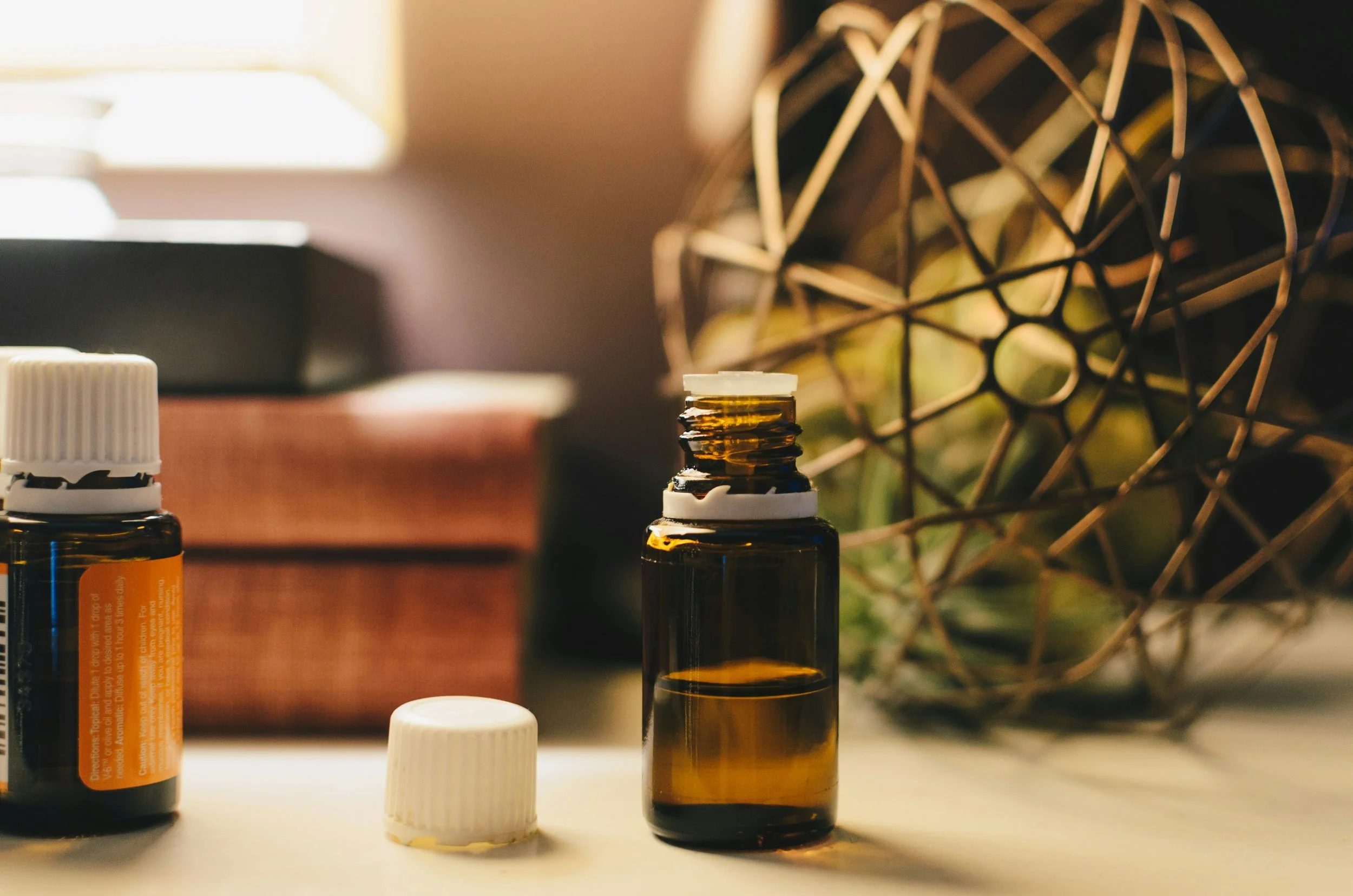Behind the Scent: The Healing Power of Aromatherapy
What is Aromatherapy:
Aromatherapy is defined as the systematic use of essential oils in holistic treatments to improve physical emotional and mental well-being and is is often used as a complementary therapy alongside conventional medicine.
What Are Essential Oils:
Essential oils are concentrated plant extracts that capture the natural aroma and beneficial compounds of their source. They are typically extracted through distillation (usually steam) or by cold pressing from various parts of plants, such as Leaves (e.g. Eucalyptus, Peppermint) Flowers (e.g., lavender, rose) Bark (e.g., cinnamon) Roots (e.g., ginger) Resin (e.g., frankincense, benzoin) Rinds/peels (e.g., orange, lemon)
Did you know it takes approximately 8,000 jasmine blossoms to produce just one gram of jasmine essential oil? Similarly, it takes around 4000kg of rose petals to produce 500 grams of rose essential oil. These numbers may seem staggering and essential oils can be costly, but it's important to remember that essential oils are pure, highly concentrated and a little goes a long way.
Historical Usage of Essential Oils:
Essential oils have a rich history dating back thousands of years and have been used across a multitude of ancient cultures. In Ancient Egypt, oils like frankincense, myrrh, cedarwood, cinnamon, and lavender were employed in religious ceremonies, cosmetics, embalming, and medicine. In India, essential oils still play a central role in Ayurveda.
In China, aromatic substances were documented in the “Yellow Emperor’s Classic of Internal Medicine” around 2697–2597 BC, illustrating early use in Traditional Chinese Medicine. The Greeks and Romans integrated these practices into daily life, employing oils for massage, baths, fumigation against plague, and wound treatment—Hippocrates notably recommended aromatic baths and massages . During the Islamic Golden Age, Persians refined the steam distillation method around the 11th century, paving the way for modern extraction techniques.
Finally, in the early 20th century, French chemist René‑Maurice Gattefossé coined the term “aromatherapy” in his 1937 book, “Aromatherapie” ushering in a resurgence of interest and a foundation for today’s holistic and therapeutic use .
How Aromatherapy Works:
Essential oils are typically inhaled or applied to the skin via massage diluted with a carrier oil. When applied topically, essential oils are absorbed into the body via the skin which is semi-permeable. Essential oils are composed of light weight molecules such as terpenes and phenols which can easily pass through the outermost layer of the skin. Additionally, the outer layer of the skin is rich in lipids or fats and essential oils are lipophilic, meaning they dissolve easily in fats and oils, hence the skin absorption.
Aromatherapy massage combines the benefits of therapeutic touch with the healing properties of essential oils to support both physical and emotional well-being. Physically, it can help reduce muscle tension, improve circulation, and enhance lymphatic drainage, which supports detoxification and immune function. The essential oils used during the massage can also have anti-inflammatory, analgesic, or relaxing effects, helping to ease pain, support respiratory health, and promote deeper relaxation throughout the body.
When essential oils are inhaled, the scent molecules travel through the olfactory system to the brain, particularly affecting the limbic system, which controls emotions and memories. Smells can be such powerful emotional and nostalgic triggers, for example the smell of cookies baking might suddenly take you back to your childhood. The smell of butter and vanilla hits your olfactory receptors. These signals go straight to your limbic system, especially the hippocampus (memory) and amygdala (emotion)centres and the scent bypasses conscious thoughts and taps into emotional memories involuntarily. Therefore, aromatherapy can calm anxiety, boost mood, help with sleep, improve focus, trigger emotional memories.
Benefits of Aromatherapy:
Stress Relief & Relaxation: Lavender and chamomile are commonly used to reduce anxiety and promote calm.
Improved Sleep: Oils like frankincense lavender and sandalwood can aid in better sleep quality.
Pain Management: Peppermint and eucalyptus may help relieve headaches, muscle aches, and joint pain.
Enhanced Mood: Citrus oils like orange or lemon can uplift mood and boost energy.
Support for Respiratory Health: Eucalyptus and tea tree oils can help clear nasal passages and improve breathing.
Precautions:
Essential oils have become more mainstream and have increased in popularity over the last few years. It's important however to use and handle essential oils with care, and to be well-informed on the subject, as they are powerful. Respecting their uses, application methods and doses is essential.
While they are generally safe to use externally with a carrier oil for massage or in an infuser or a few drops in a bath, there are some health contraindications when using essential oils, so it is best to visit with a qualified practitioner who will ask you to fill out a detailed holistic health questionnaire to ascertain what is safe to use based on your physical and emotional state. Some oils when applied to the skin can be photosensitive and should not be exposed to sunlight for several hours and essential oils should not be ingested.
Barbagianni Retreats.
Discover the profound benefits of aromatherapy and join one of our Tuscan-based nurture retreats. Reserve your spot today and embark on a path to wellness. www.barbagianni-retreats.com
Written by: Zadia Lenders BA, Diploma Holistic Therapy
REFERENCES
Essential Oil Safety: A Guide for Health Care Professionals by Robert Tisserand and Rodney Young
The Complete Book of Essential Oils and Aromatherapy by Valerie Ann Worwood
Aromatherapy for Health Professionals by Shirley Price and Len Price
The Essential Oils Handbook: All the Oils You Will Ever Need for Health, Vitality and Well-Being by Jennie Harding
Holistic Therapies by Helen Mcguiness
The Directory of Essential Oils by Wanda Sellar
